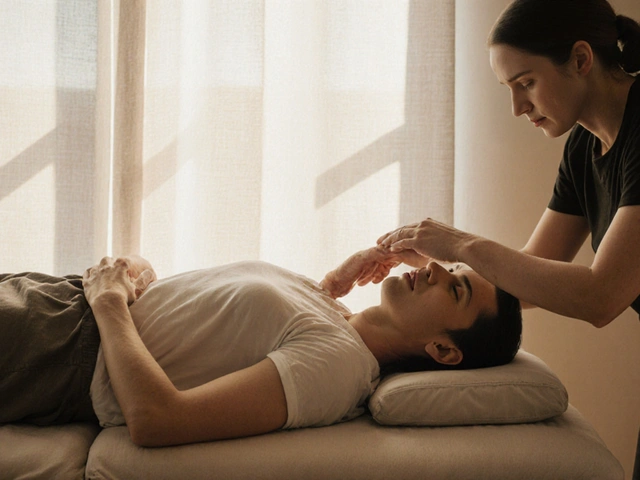Body Therapy: Practical Massage and Mind-Body Tools
Body therapy covers hands-on work and simple mind-body tools that ease pain, speed recovery, and calm the nervous system. Whether you care for a sporty dog, an anxious pup, or your own sore shoulders after a long walk, a few focused techniques make a real difference.
Quick home massage for dogs (three steps)
Start slow. Sit beside your dog and let them sniff your hand. Spend 30–60 seconds just petting to check for sensitivity.
Use gentle strokes along the neck, shoulders, and back. Keep pressure light—enough to move skin over muscle but not so hard it causes cringe. Short 3–5 minute sessions, once or twice daily, reduce tension and improve circulation.
Finish with small circular motions over tight spots. If your dog pulls away, stop. If they relax, repeat but stay brief. Watch breathing and body language: a soft sigh, loose jaw, and wagging tail are good signs.
Practical tips for owners: tools and timings
Warm up muscles before deeper work. Use a damp warm towel for a minute on stiff areas, or give a short walk to increase blood flow. Cold packs help acute swelling—apply 10 minutes at a time with a cloth barrier.
Myofascial-type work (long, slow strokes) eases tight bands. You don’t need special skills: glide your hand slowly along a tight muscle and notice where resistance eases. Stop if it causes pain.
Sports-style massage helps performance dogs after training. Use light rhythmic compression to flush lactic acid right after activity, and deeper, slower strokes later to restore mobility. Keep sessions short—10–20 minutes depending on size and tolerance.
Mind-body tools matter for both dogs and owners. Slow breathing, soft voice, and steady hands create a calm environment. For owners, even 5 minutes of guided breathing lowers stress and helps you read your dog better.
Biofeedback and relaxation tech can track progress. A simple heart-rate monitor shows whether your dog or you are calming down during sessions. Use data as a guide, not a rule.
Know when to get help. If your dog has sudden limping, swelling, loss of appetite, or intense pain, see a vet first. For chronic stiffness or recurring problems, a certified canine massage therapist, physiotherapist, or vet behaviorist will give targeted care and an exercise plan.
Small, consistent steps win. Five minutes of focused touch every day, paired with walks and basic stretching, often beats occasional long sessions. Use gentle pressure, watch reactions, and build trust. Body therapy isn’t magic, but done right it keeps your dog moving, calm, and happier—and helps you feel better, too.

Unlocking the Benefits of Maya Abdominal Massage for Whole Body Health
Maya Abdominal Massage is not just a spa treatment; it's a profound form of therapy rooted in ancient Maya traditions, aimed at enhancing both physical and mental health. This therapeutic technique focuses on the abdomen, a vital area housing many of our bodily organs. Through gentle, non-invasive manipulation, this massage helps to improve organ function, relieve common digestive and reproductive issues, and reduce stress. By exploring its history, benefits, techniques, and modern-day applications, individuals can gain a comprehensive understanding of how this practice promotes overall health and well-being.

Laos Massage: Stress Relief with a Fresh Touch
Apr, 30 2025



